20th Anniversary Trip to Egypt - Hatshepsut Temple & Valley of the Kings
- Gizo & Cairo - Luxor & Karnak - Hatshepsut Temple & Valley of the Kings - Edfu, Philae & Abu Simbel -
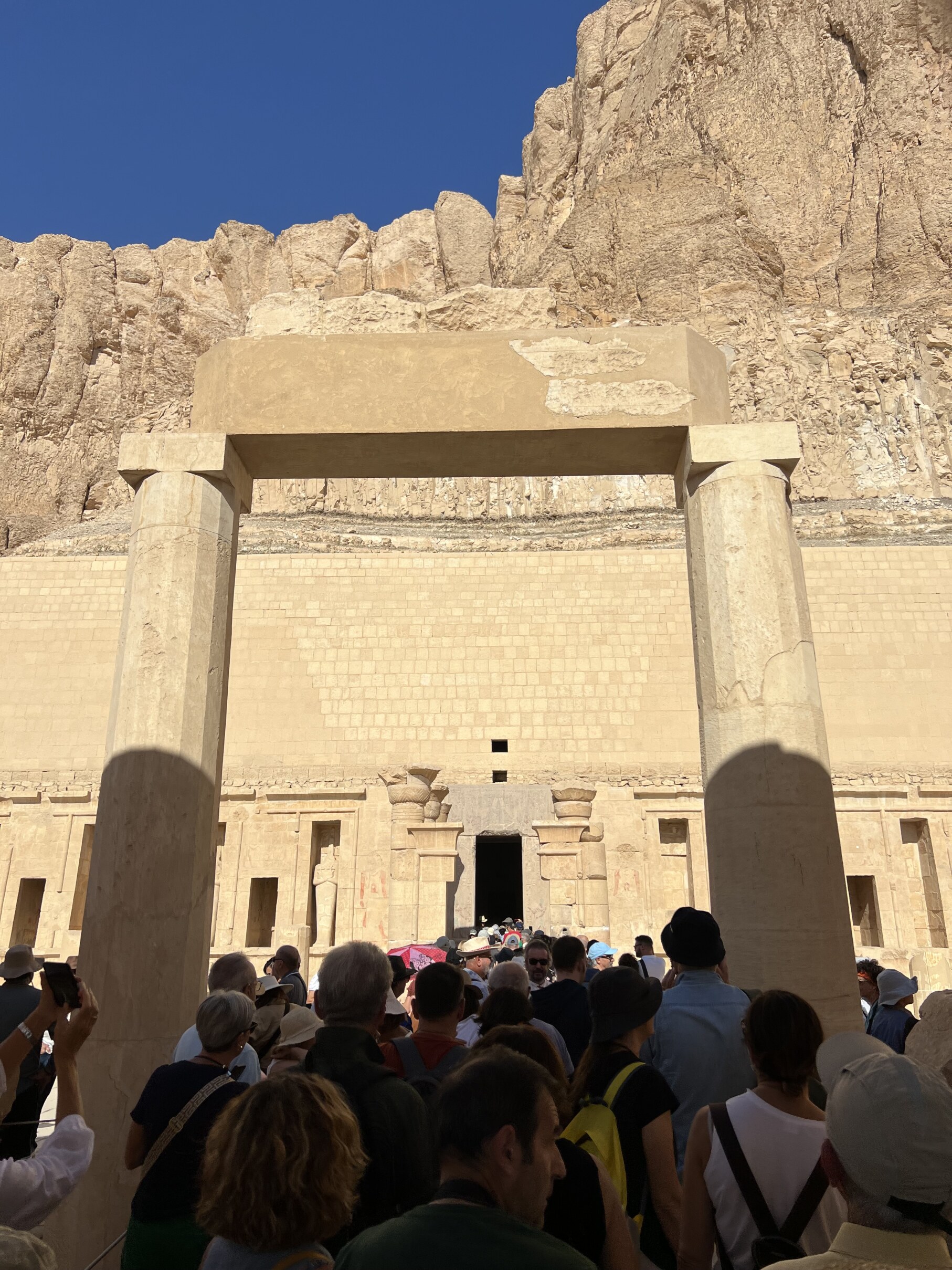
One thing to note about Hatshepsut's and other older Egyptian temples is that certain defining elements of the structure e.g., columns, are prototypical of so-called "Classical" architecture seen centuries later in what is more accurately small "c" classical architecture, i.e., Greek and Roman monumental. As such, the wow-factor is likely to go missing if one is not mindful of how far back in history this temple particular dates, i.e., 1400BCE. Another challenge relates to scale and photographing this site. Hapshepsut's temple presents a very broad vacade, marking a complete departure from the architectural style of other Kemetic temples. Then it is situated against the towering walls of a mountain. So you'd have to take this and the next two photos, then kinda image the panoramic scale of the site. I was mind blowing.
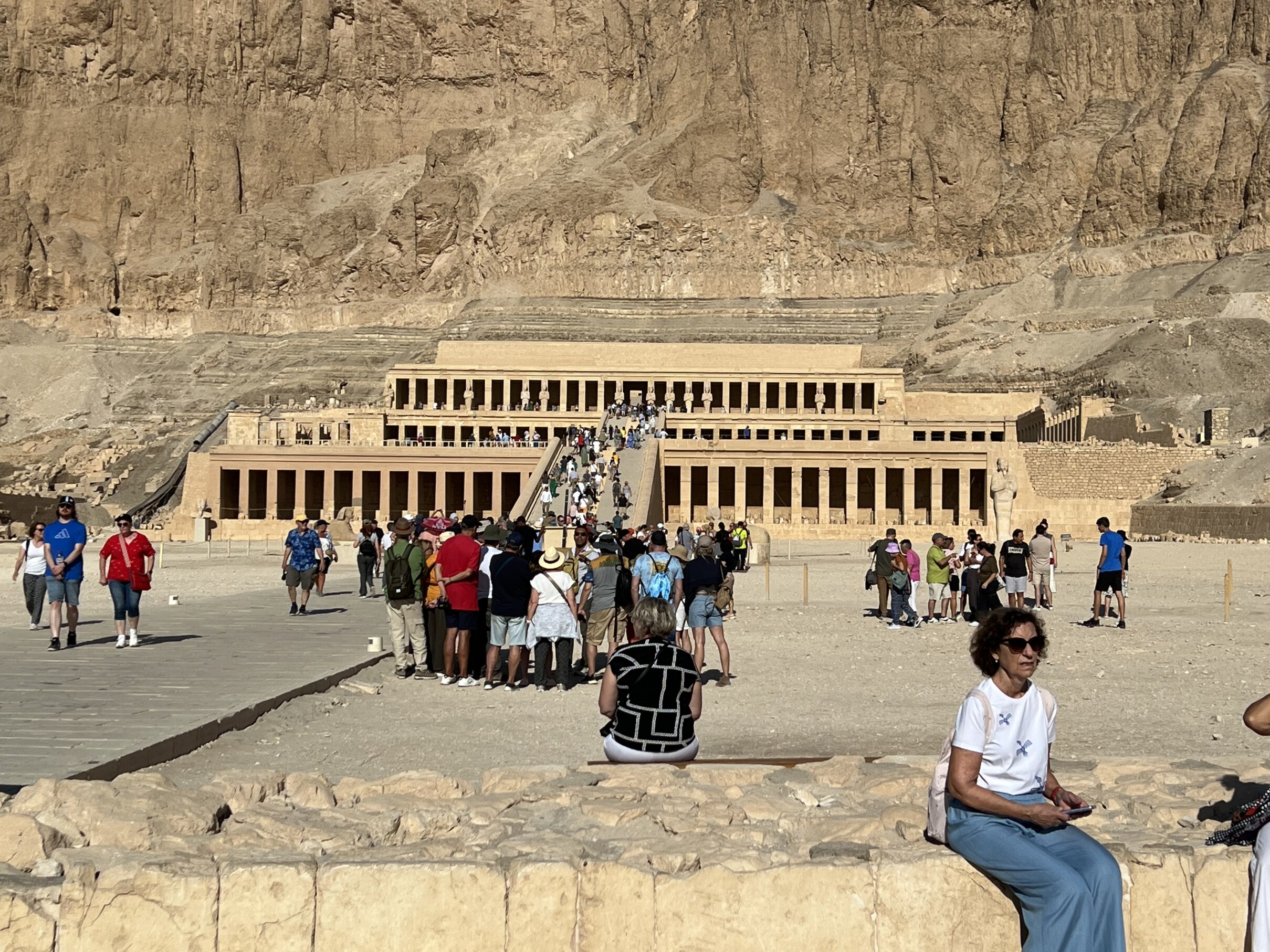
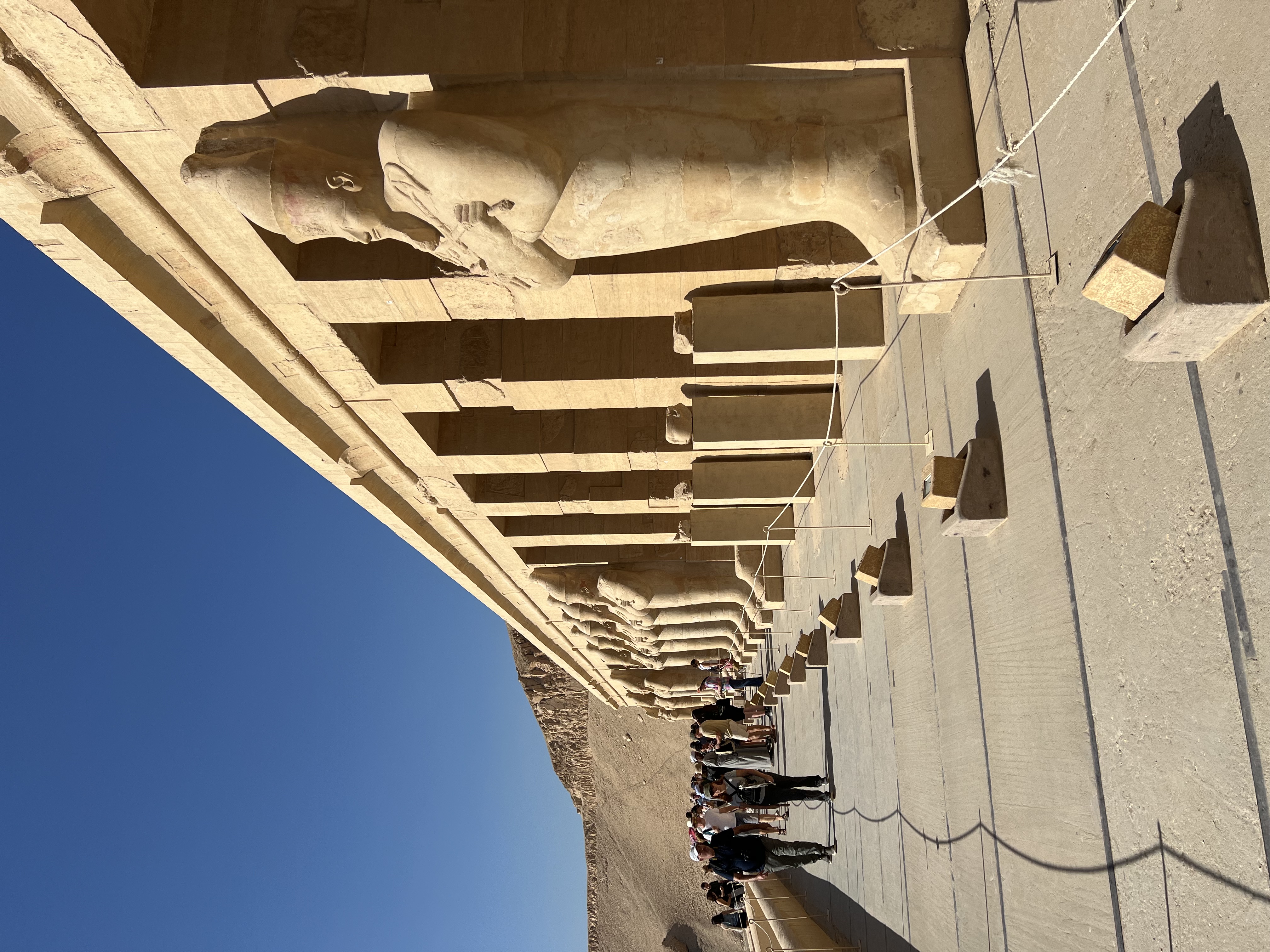
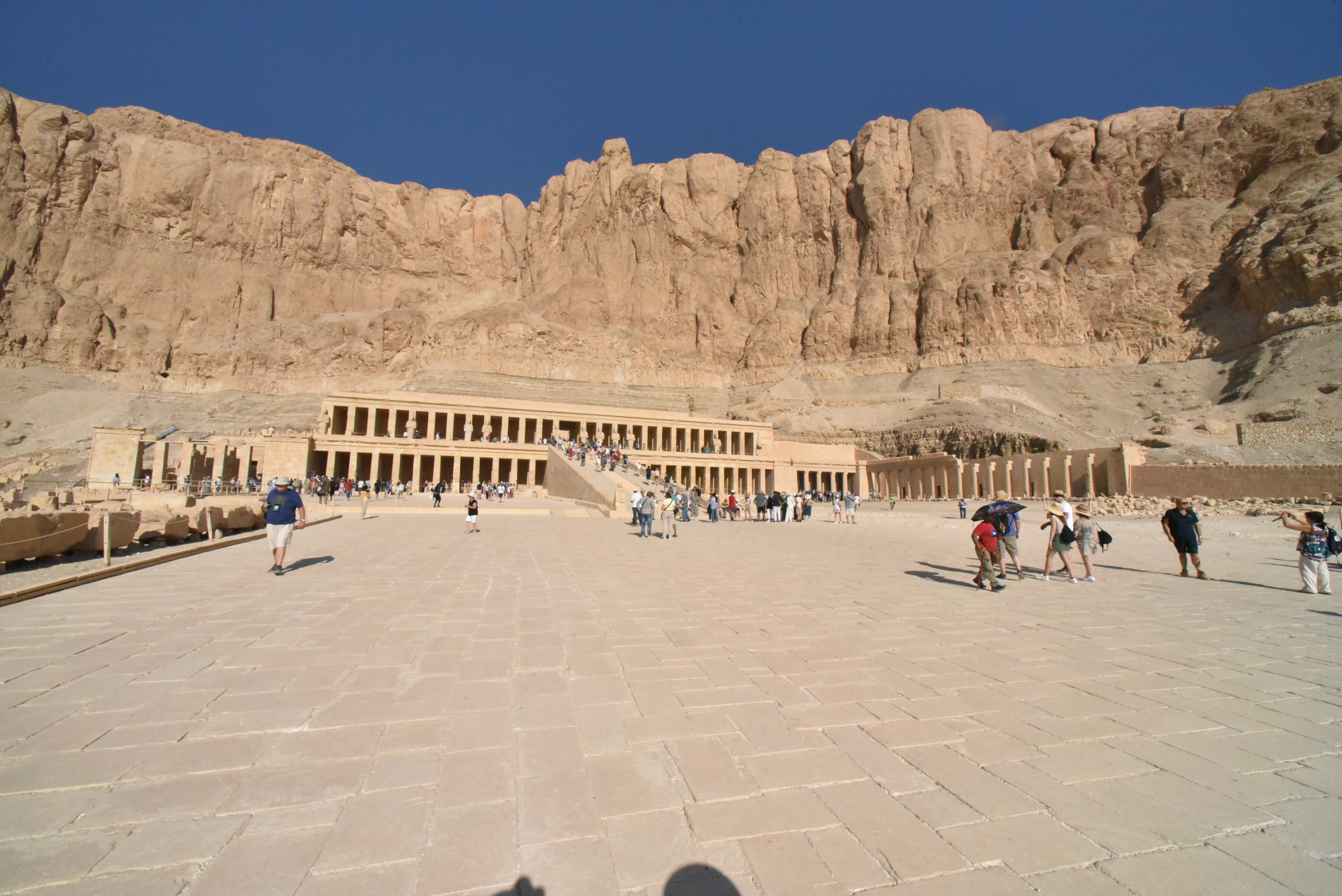
Again, this wide angle shot manages to get it all in, but greatly distorts the height of the cliffs behind the temple.
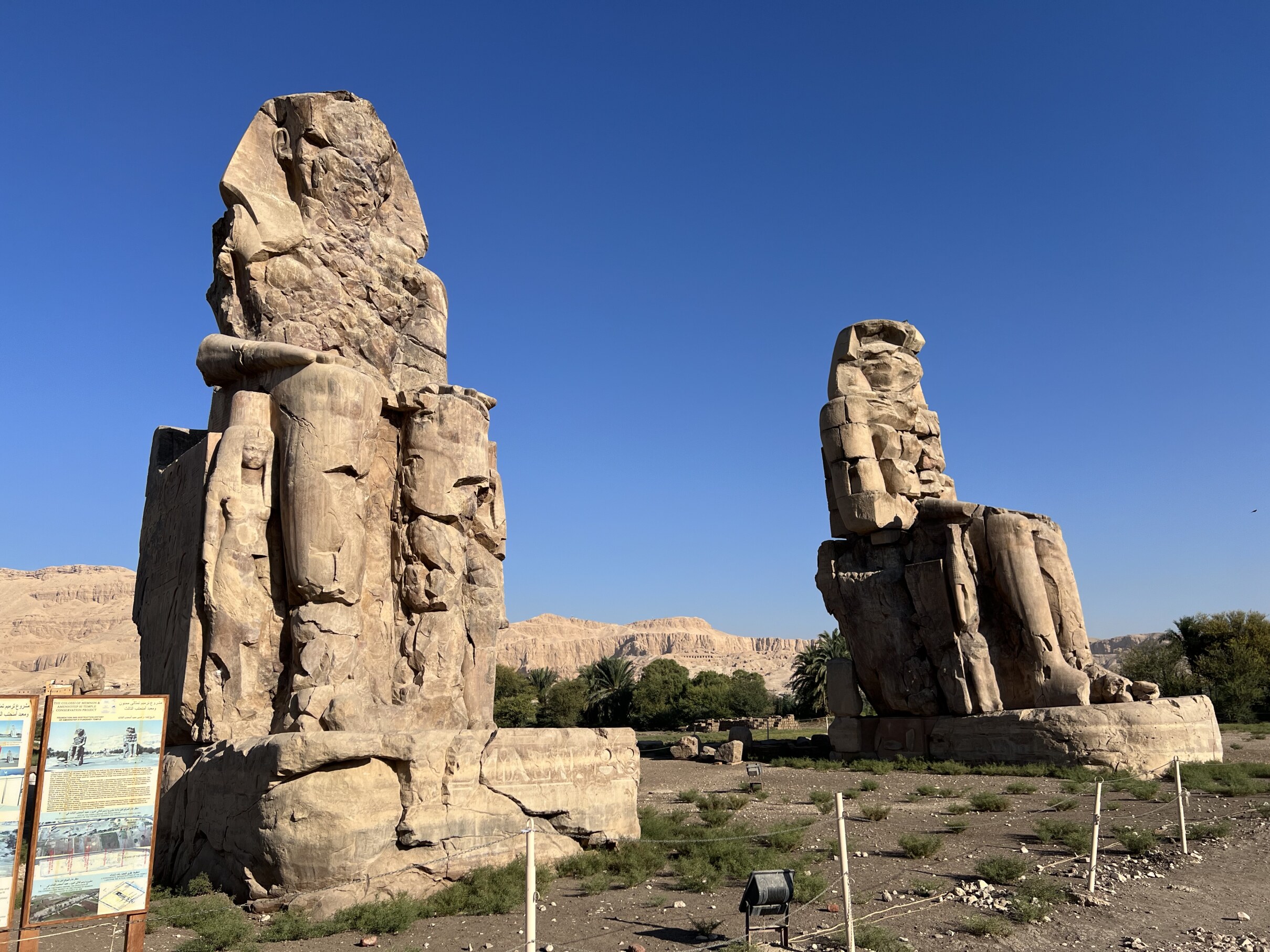
I was less impressed at seeing the Colossi of Amenhotep III than I thought I'd be, I think because virtually everything in Kemetic (ancient Egyptian) architecture was done on a phenominally grand scale, and more so because the collossi are so badly weathered by time and the elements. They are very large in any case.
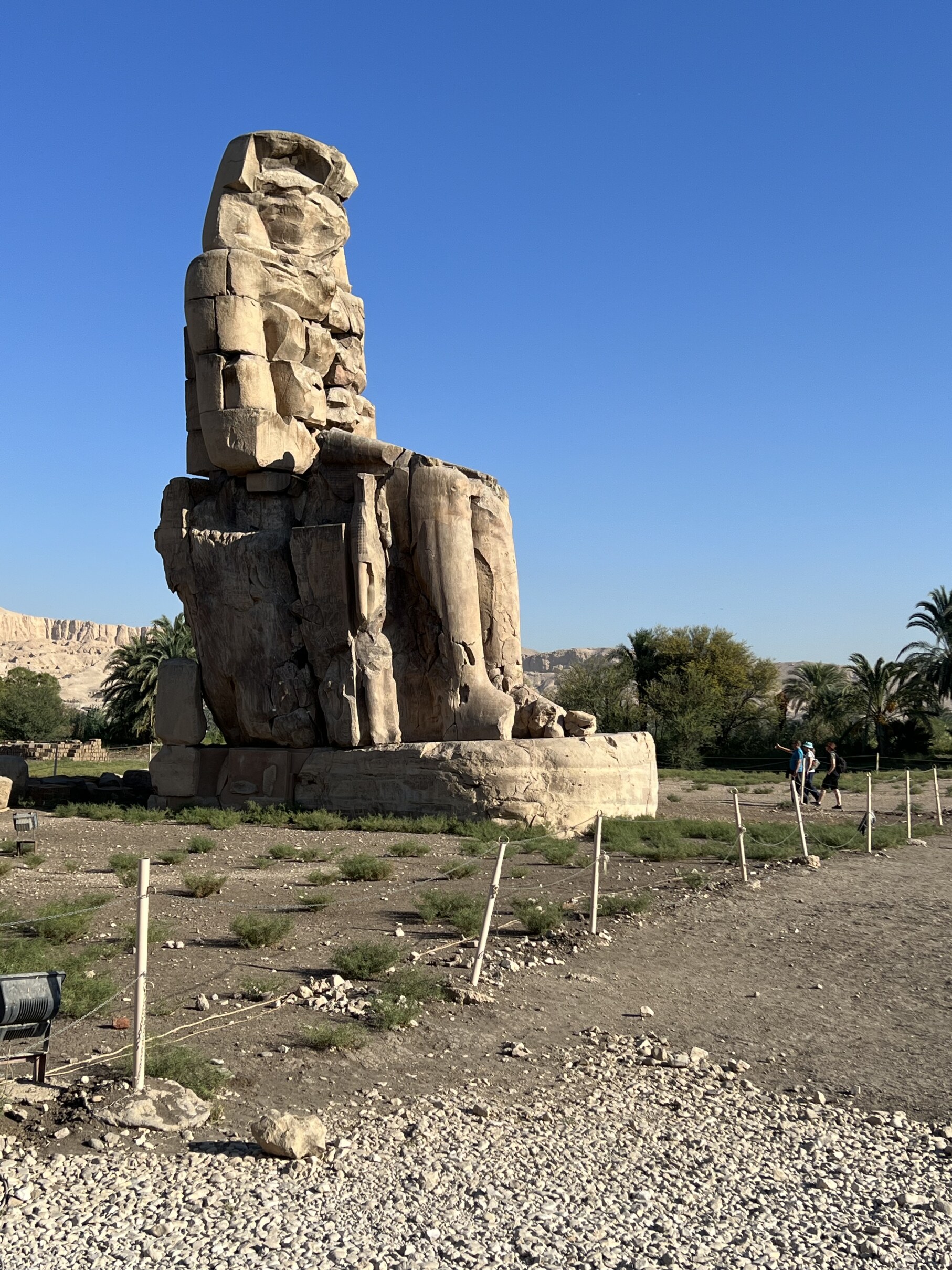

The Valley of the Kings, not to be confused with the Valley of the Vendors tourists are shunted through upon exiting any of these sites, is situated beneath a natural pyramid. There are four tombs open to tourists, one of them that of King Tut. And as many of you will know, much of what had been in Tut's tomb was long ago looted and stolen away to the British Museum, the Louvre, or elsewhere in Europe.
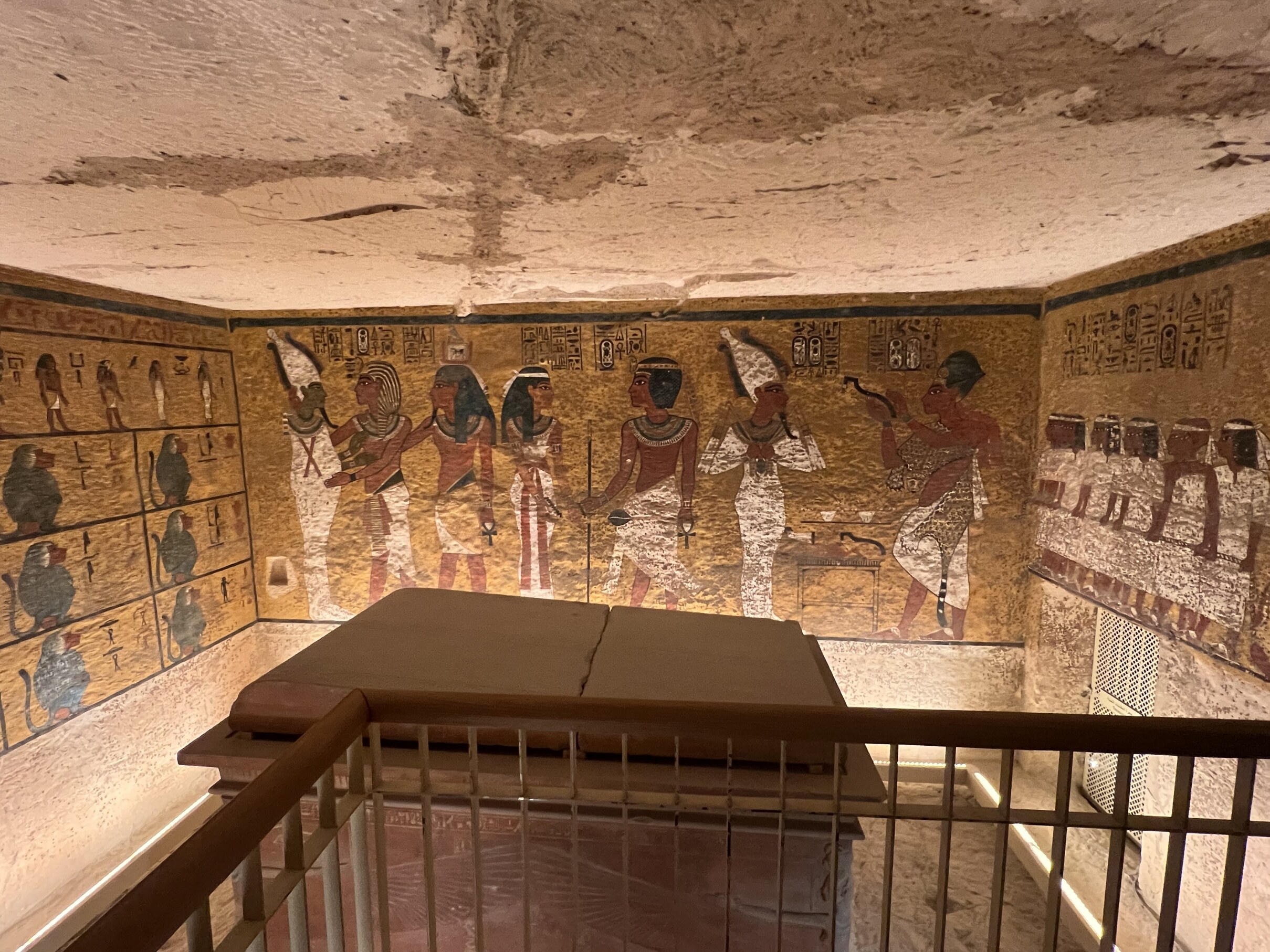
There is a more ornately painted tomb among those open to the public, but it was a deep and very, very hot, so I didn't go into that one. This photo is from inside King Tut's tomb. A credit to the Egyptians that figures were not "color adjusted" too terribly in restoration and conservation over the years.

Being inside King Tutankhamun's wasn't a big wow for me so much as were the great temples, the pyramids, the Sphinx or the Nile River, and this had nothing to do with size. Guides are not permitted to enter tombs with groups, mainly to avoid over-crowding, noise, and damage due to humidity. So with all the publically accessible tombs effectively looted, I could only view the heiroglyphs painted inside as art works, since there was no guide to explain their meaning or the historical context.
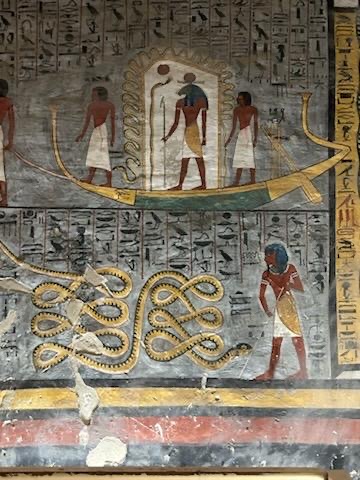
I have to credit Thedra for some of the best photos taken on the trip, especially inside the tombs. Here are three examples.

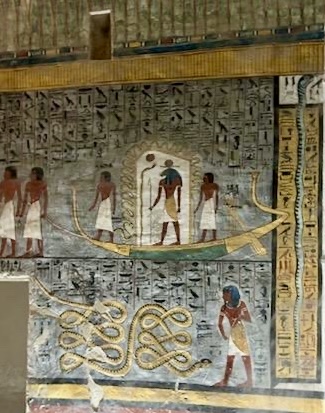

Me sitting out what was the best preserved and most colorfully painted of the tombs we had access to. I'm in my 70s and in relatively good shape, but I have to be careful. So feeling a little light-headed I turned around as we were descending, at a point where the entry way narrowed, and a hellish blast of heat pushed out from the shaft below.
- Gizo & Cairo - Luxor & Karnak - Hatshepsut Temple & Valley of the Kings - Edfu, Philae & Abu Simbel -